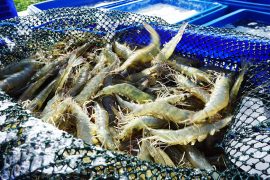
Fire ants can teach us how to create stronger materials
In the face of natural disasters like flooding, fire ants demonstrate a remarkable survival tactic. These tiny creatures come together, interlocking to form a buoyant structure akin to a raft.
This living raft is not only about survival but also represents a dynamic, adaptive system, much like the materials scientists aspire to create.
How fire ants shape material science
Professor Rob Wagner from Binghamton University has taken a deep dive into understanding these natural phenomena.
Previously part of the Vernerey Soft Matter Mechanics Lab, Professor Wagner has been exploring how fire ants adjust and change their structure under various conditions. His research aims to decipher the secrets of these living systems to enhance our material sciences.
“Living systems have always fascinated me because they achieve things that our current engineered materials cannot – not even close,” said Wagner.
He highlighted the contrast between passive materials used today, like metals and ceramics, and the active, energy-converting mechanisms observed in living systems.
Mimicking smart behaviors
In their recent work, the team investigated how fire ant rafts react to mechanical stress. They observed that unlike polymers that flow or break under different stresses, the ant bonds held strong consistently.
“Many polymers are held together by dynamic bonds that break, but can reform,” explained Professor Wagner. “When pulled slowly enough, these bonds have time to restructure the material so that – instead of fracturing – it flows like the slime our kids play with, or soft-serve ice cream.”
“When pulled very fast, though, it breaks more like chalk. Since the rafts are held together by ants clinging onto one another, their bonds can break and reform. So, my colleagues and I thought they’d do the same thing.”
However, the researchers found that the ants’ bonds did not weaken or flow regardless of the pulling speed. Professor Wagner speculates that the fire ants intensify their grip under stress, likely due to a survival instinct that maintains cohesion.
Catch bond behavior
The phenomenon where bonds strengthen under force is termed “catch bond behavior.” This feature likely serves as a protective mechanism, enhancing the colony‘s cohesion, crucial for their survival.
“As you pull on typical bonds with some amount of force, they’re going to let go sooner, and their lifetime goes down – you’re weakening the bond by pulling on it. That is what you see in almost any passive system,” noted Professor Wagner. “But in living systems, because of their complexity, you can sometimes have catch bonds that hold on for longer durations under some range of applied force.”
Fire ants inspire the next wave of engineered materials
Looking ahead, Professor Wagner believes that replicating catch bonds in engineered materials could revolutionize various fields. This adaptation could significantly improve the durability and functionality of biomedical implants, adhesives, fiber composites, and components used in soft robotics.
Inspired by collective insect behaviors, other researchers are also venturing into materials with responsive mechanical properties.
“A natural progression of this work is to answer how we can get the interactions between these ribbons or other soft building blocks to ‘catch’ under load like the fire ants and some biomolecular interactions do,” said Professor Wagner.
The ongoing research inspired by fire ants not only deepens our understanding of nature but also paves the way for innovations in material science, illustrating once again how much we can learn by observing the world around us.
More about fire ants
Fire ants are remarkable engineers, constructing intricate nests that serve both as shelters and as a means of regulating their internal environment.
These ants start building by digging out soil with their mandibles, creating underground networks of tunnels and chambers.
Fire ant nests
The architecture of a fire ant nest is primarily designed to maintain a stable internal climate, protect against predators, and manage water ingress during rain.
The nests vary in depth and complexity based on the soil type and environmental conditions. In sandy soils, fire ants can build deeper and more elaborate tunnels, while in clay-rich soils, the structures might be shallower but spread wider.
Air flow and temperature
Fire ants also cleverly use the soil they excavate to build mounds above ground, which help regulate the nest’s temperature and provide an emergency exit during floods.
These mounds are not just piles of dirt; they are engineered to optimize air flow and temperature. The tunnels within allow heat from the sun-warmed mound to circulate down and warm the nest on cool days, and conversely, let heat escape to the cooler earth when it’s hot above ground.
This natural air conditioning is crucial for the survival and productivity of the colony, as it helps maintain an optimal environment for raising their young.
The study is published in the journal Proceedings of the National Academy of Sciences.
—–
Like what you read? Subscribe to our newsletter for engaging articles, exclusive content, and the latest updates.
Check us out on EarthSnap, a free app brought to you by Eric Ralls and Earth.com.
—–













